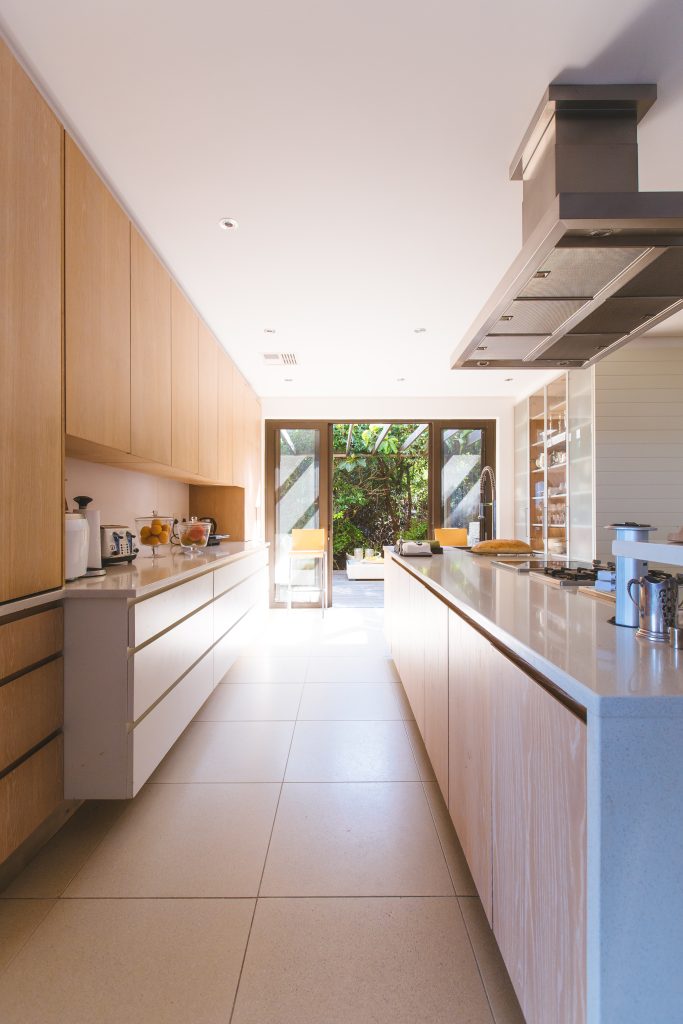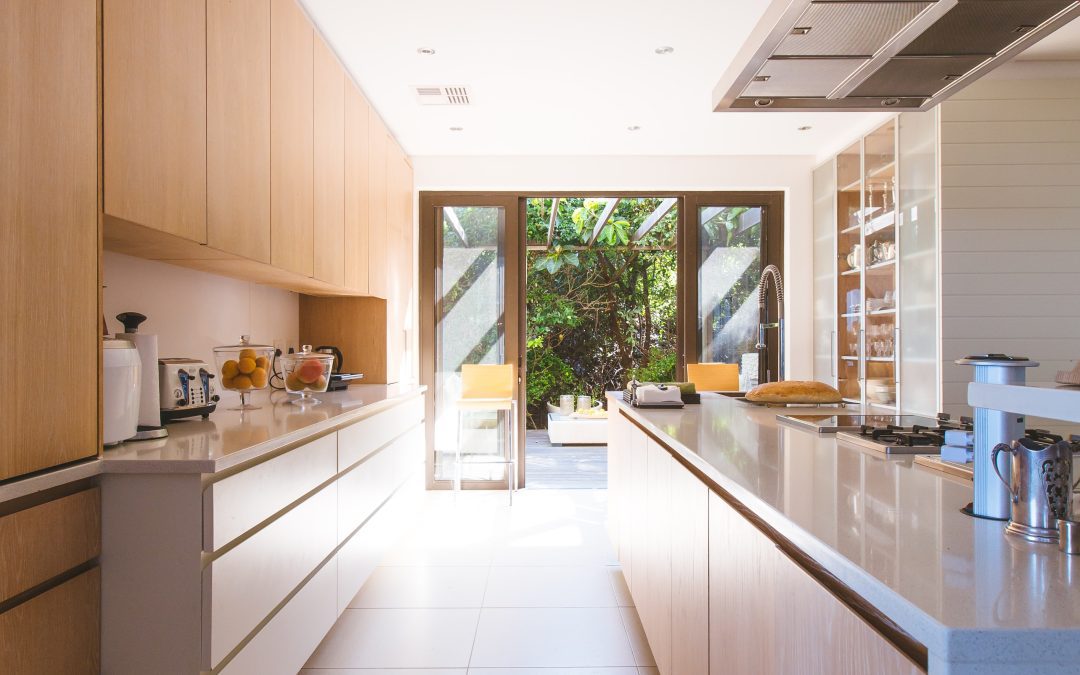Did you know that, on average, we spend 90% of our time indoors?
And here’s some unfortunate news: it’s not recommended for our physical and mental well-being.
Human beings have evolved over thousands of years in open environments. It’s easy to understand that we’re not designed to spend most of our time confined within four walls.

Of course, the most important advice is to try to balance this by adding outdoor activities to our routines.
But some things are hard to change.
And it’s likely that necessity will continue to lead you to spend most of your time indoors.
Don’t worry: there’s something else we can do to mitigate the negative effects this has on our health.
Today, we’re going to tell you how to arrange your space in the healthiest and most organic way for your brain, according to neuroscience.
But first, why is all of this so important?
Benefits of arranging your space according to neuroscience
1. You manage the information that reaches you through conscious and unconscious channels
Out of all the information we receive from our environment, we process only 5% through conscious perception.
The rest is processed through our unconscious mind.
And even though we may not be aware of it, this information has the power to influence our autonomic nervous system and modify our breathing, heart rate, or body temperature.
Neuroscience helps us understand how this environmental information makes us feel, even when we’re not consciously aware of it.
2. You respect your biological conditions
Over time, we have normalized certain environmentally unhealthy conditions from a biological and neurological standpoint.
We’ve lost the ability to recognize how harmful overly stagnant air, poor lighting, or excessive electromagnetic pollution can be to our biological and neurological systems.
But here’s where neuroscience reminds us of the conditions our biology encourages us to respect in order to achieve the best possible physical and emotional health.
3. It helps you achieve specific goals
Knowledge in neuroscience applied to architecture and interior design allows spaces to be designed to influence human behavior.
Thanks to this knowledge, it’s possible to create a living room that promotes communication, a study that enhances concentration, or an office that boosts creativity.
4. It keeps stress in check
You’ve probably heard of cortisol, the infamous stress hormone.
Work, social life, social media, family, and so on: our modern lifestyle tends to contribute to excessive cortisol secretion.
The goal here isn’t to demonize cortisol—it’s responsible for waking us up in the morning and helping us face the day with energy.
But chronic stress, with persistent elevated cortisol levels, does become a problem.
While improving your space might not be the ultimate solution to this issue, every little bit helps.
Neuroscience has shown us that there are interior designs that contribute to mental calm, while other spaces produce the opposite effect.
5. Improves mood and cognitive performance
It’s incredible how small changes, like introducing moving water into living spaces or facilitating gentle air circulation, have a positive effect on our focus, memory, and mood.
Due to increased happiness, a well-optimized space in terms of neuroscience can even expedite recovery from illnesses.

In fact, an article by Ann Sussman and Katie Chen for Common Edge proposed the theory that modern architecture emerged from the disorders experienced by some of its founding figures.
For instance, some authors suggest that Le Corbusier had autism and that his designs were an attempt to find calm amidst so much cerebral hyperstimulation.
In short, all the benefits of improving spaces according to neuroscience point in the same direction: an enhancement of the health, well-being, and cognitive performance of its occupants.
And you’ll agree that this is no small matter.
Now, after considering all these advantages, let’s dive into the details.
10 tips for improving your space according to neuroscience
1. Prioritize natural materials

One of the concepts that neuroscience has explored the most in relation to design is biophilia.
According to biologist Edward O. Wilson, contact with living beings and natural materials is just as important as socializing with other people.
And one of the easiest ways to achieve this is by prioritizing the use of materials like solid wood, stone, and other natural materials.
Combine this with the presence of some plants, and you’re creating a space reminiscent of nature.
2. The effects of color psychology

Color is one of the most versatile elements in the realm of applied neuroscience.
It’s not about determining whether we like a color or not.
Regardless of our preferences, studies have shown that certain colors change our emotional states without us even realizing it.
Have you noticed, for example, that most fast-food restaurants are red?
This color stimulates our digestive system and encourages faster table turnover. As you can see, nothing is left to chance.
3. Natural light: an inimitable resource
No matter how advanced our technology is, it hasn’t been able to perfectly replicate natural light.
And our bodies know it.

Natural light, even when it filters indoors, provides vitamin D, which helps strengthen bone structure.
It also promotes sustainability by avoiding unnecessary energy consumption, and here’s an interesting fact: natural light increases productivity by up to 40%.
It also helps regulate our circadian rhythm for better nighttime rest, improves our immune system, and enhances cognitive function.
4. Artificial light: how to use it
Let’s admit it: having enough natural light for every room is challenging.
For this reason, or simply to illuminate spaces during nighttime hours, we need to resort to artificial light.
But even in this case, there’s artificial light and then there’s artificial light.
Certain lighting fixtures have the ability to change intensity and color throughout the day to respect our circadian rhythm.
Other adaptable lighting systems are also great for creating different lighting scenes as needed.
For instance, ambient light for relaxation moments or brighter light during certain activities.
5. Moving water as a decorative element
As we mentioned earlier, introducing moving water into your indoor space reduces stress and improves mood.

The use of moving water as a decorative element is very common in the East. In our culture, not so much. Would you be willing to incorporate it?
6. Views of the outdoors
Neuroscience has found that our brains need unobstructed views to the outdoors at distances greater than 30 meters (approximately 100 feet).
However, this is a point that can’t often be altered in most cases.
The real estate market might force us to settle for spaces that aren’t conducive to this.

Even so, knowing this fact can help you prioritize rooms with windows facing the outside for activities that consume most of your time.
Likewise, you might think twice before covering your windows with heavy curtains if this was your habit.
7. Proportions and patterns, according to neuroscience
The growth pattern of plants, the movement of cyclones, tides, our bone structure—you’ve probably heard it before: nature is mathematical.
Respecting certain proportions and patterns when arranging spaces is reassuring for our brains, something architects and interior designers can help you achieve.
8. The importance of acoustic comfort
Acoustics: the often-forgotten aspect of interior design.
However, the adverse effects of poor acoustics are numerous: from stress, hearing loss, increased heart rate, and blood pressure to irritability, discomfort, and psychological disorders.
Conversely, intellectual performance and productivity increase by 50% in a quiet work environment. This also contributes to stress reduction and overall better health.

But how can you achieve this acoustic comfort we’re talking about?
It’s important to know that, in acoustics, there are two types of measurement:
- Isolation, which encompasses actions aimed at blocking the propagation of external sounds into our space.
- Acoustic absortion, which includes measures to mitigate sound reverberation in enclosed spaces.
9. Furniture placement and its influence on social interactions
Have you ever thought about how the arrangement of furniture predisposes or doesn’t predispose social interactions?
A large table with many chairs encourages interaction among larger groups, while a room with two or three armchairs in various corners fosters more personal relationships.
Both in your home and in your workspace, think about how you’d like to arrange your furniture to achieve a certain result.
10. Air quality matters
The air we inhale plays a crucial role in maintaining our health.
We usually think about this in open spaces, as we’re all aware of the dangers of pollution in large cities.
However, the air quality indoors is also a factor that deserves our attention. As we saw at the beginning, that’s where we spend most of our time.
Whenever possible, prioritize natural ventilation, as it helps disperse accumulated particles.
Additionally, keep in mind that synthetic materials, such as petroleum-based products, emit toxic residues into the air. Another reason to prioritize the use of natural materials.
According to neuroscience, nature holds the key

As you’ve seen throughout these tips, nature tends to be the best source of inspiration when creating spaces that contribute to our health and well-being.
And it’s because biology evolves much more slowly than culture.
For our animal brain, spaces that remind it of the nature that provided shelter for millennia are a great source of calm.

That’s why at Woodslines, we’ve chosen materials that are 100% natural, such as solid wood or rock wool, derived from volcanic rocks.
Using our panels as cladding in your space improves acoustic absorption, cares for air quality, and allows you to enjoy a natural finish that evokes the forests that once sheltered humanity.






